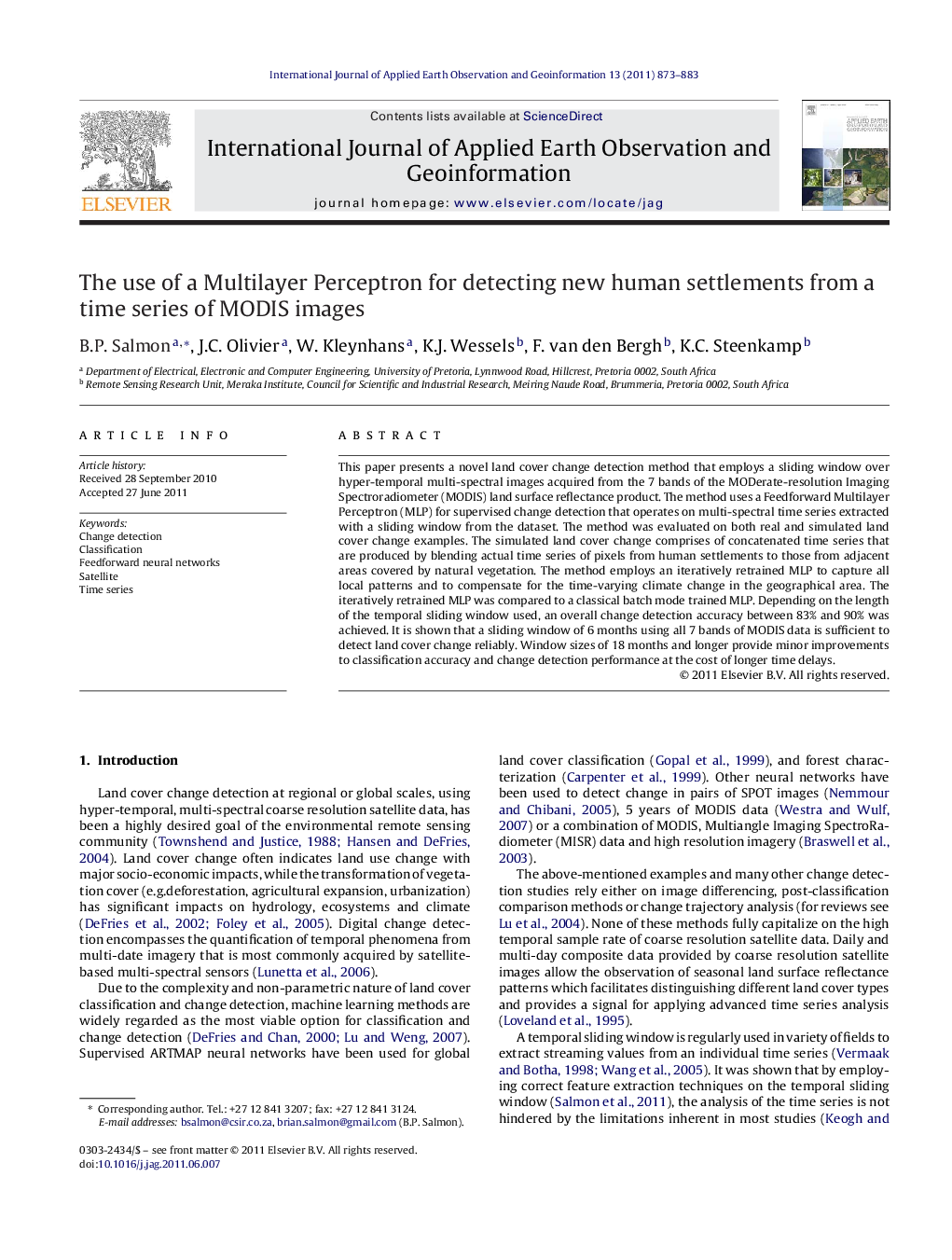| کد مقاله | کد نشریه | سال انتشار | مقاله انگلیسی | نسخه تمام متن |
|---|---|---|---|---|
| 4465170 | 1621847 | 2011 | 11 صفحه PDF | دانلود رایگان |

This paper presents a novel land cover change detection method that employs a sliding window over hyper-temporal multi-spectral images acquired from the 7 bands of the MODerate-resolution Imaging Spectroradiometer (MODIS) land surface reflectance product. The method uses a Feedforward Multilayer Perceptron (MLP) for supervised change detection that operates on multi-spectral time series extracted with a sliding window from the dataset. The method was evaluated on both real and simulated land cover change examples. The simulated land cover change comprises of concatenated time series that are produced by blending actual time series of pixels from human settlements to those from adjacent areas covered by natural vegetation. The method employs an iteratively retrained MLP to capture all local patterns and to compensate for the time-varying climate change in the geographical area. The iteratively retrained MLP was compared to a classical batch mode trained MLP. Depending on the length of the temporal sliding window used, an overall change detection accuracy between 83% and 90% was achieved. It is shown that a sliding window of 6 months using all 7 bands of MODIS data is sufficient to detect land cover change reliably. Window sizes of 18 months and longer provide minor improvements to classification accuracy and change detection performance at the cost of longer time delays.
Research Highlights
► Detection of new informal and unplanned settlements in South Africa with a better than 83% probability of detection, on a per pixel (500 m resolution) basis, using only multispectral MODIS time series data.
► Land cover change detection method that employs a sliding window over hyper-temporal multi-spectral images.
► Iteratively retrained machine learning approach that captures all local patterns and compensate for the time-varying climate change in a geographical area.
► Comparison of either using NDVI, 2 spectral bands and 7 spectral bands of MODIS to detect land cover change.
► Investigation of advantages and disadvantages when using a sliding window with a longer length to improve land cover change detection.
Journal: International Journal of Applied Earth Observation and Geoinformation - Volume 13, Issue 6, December 2011, Pages 873–883